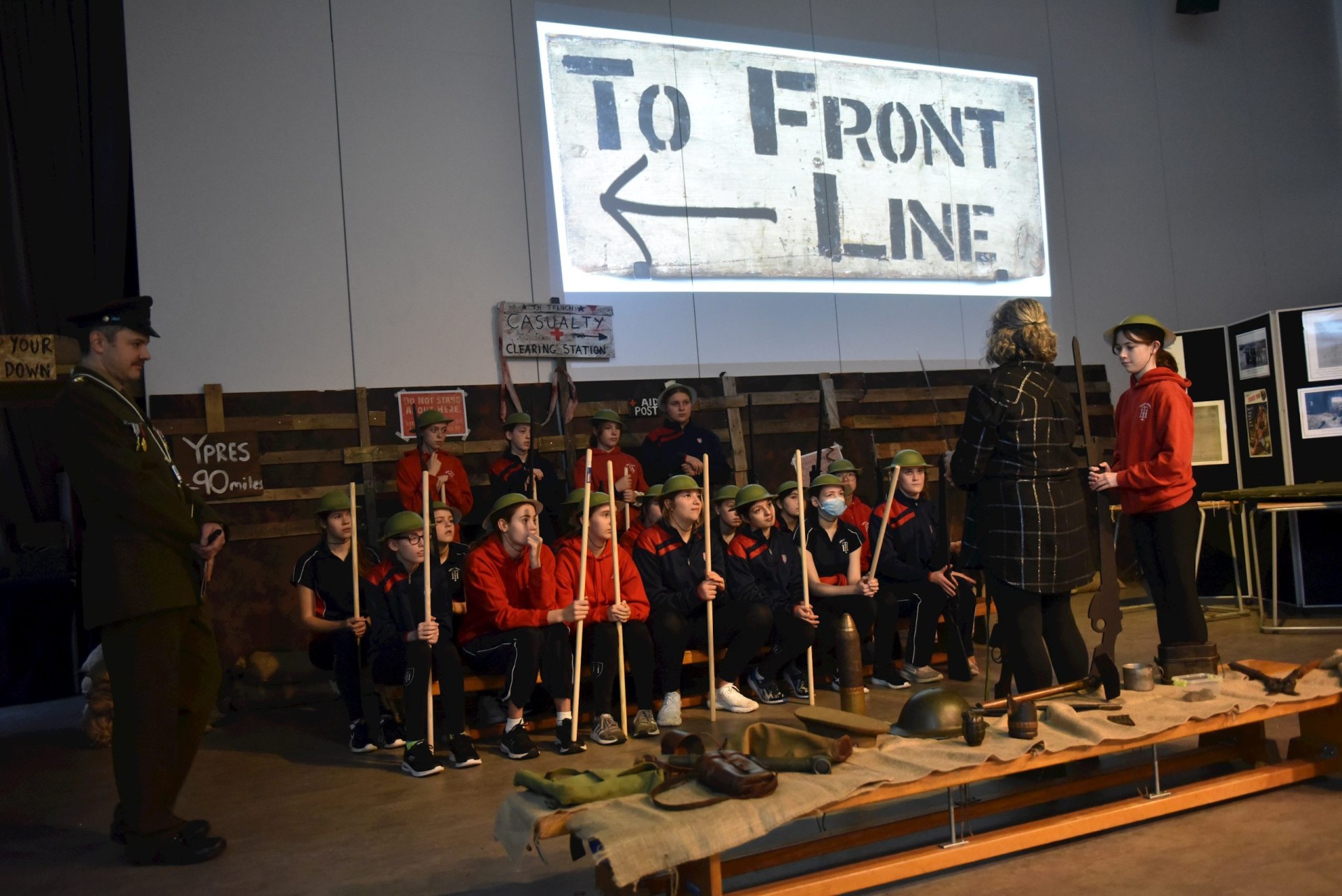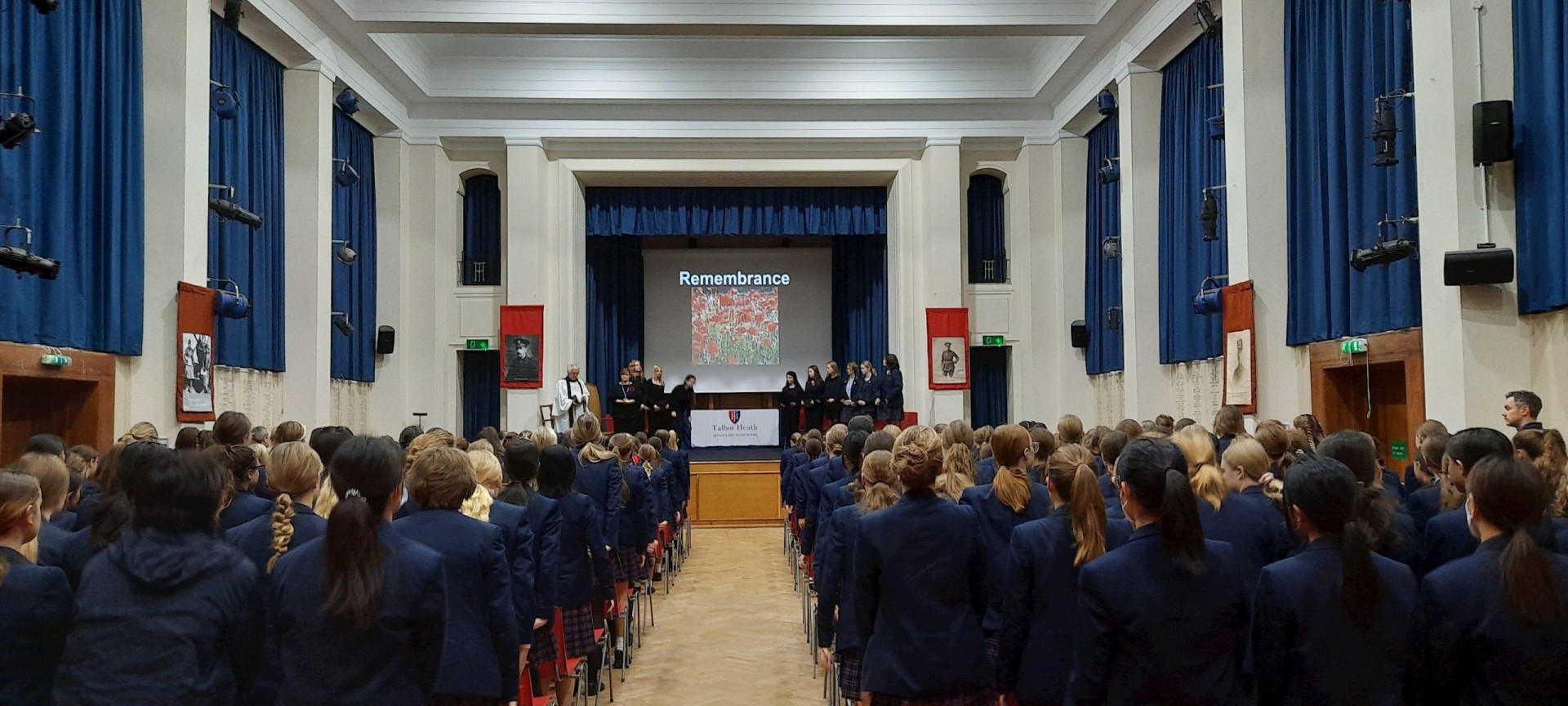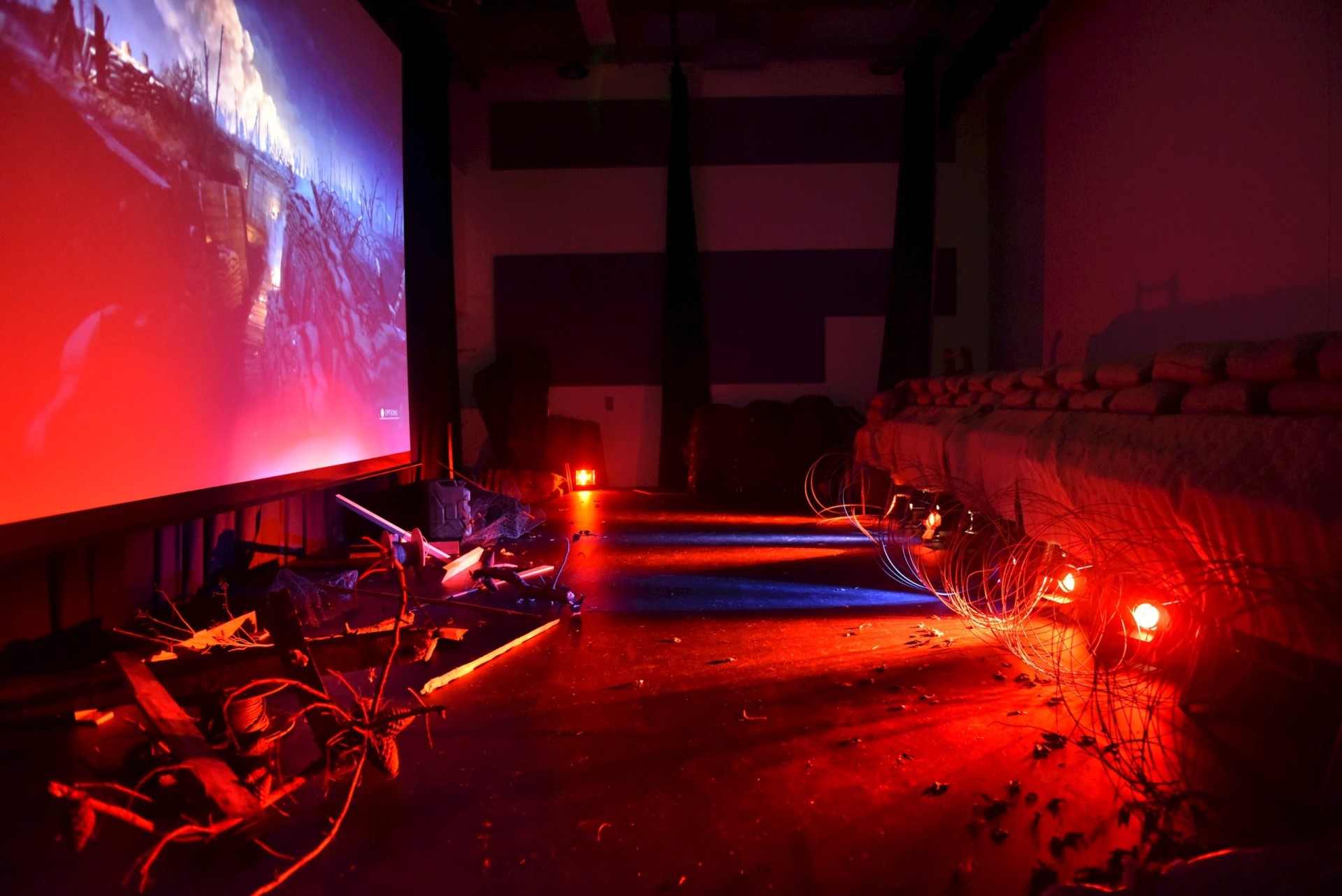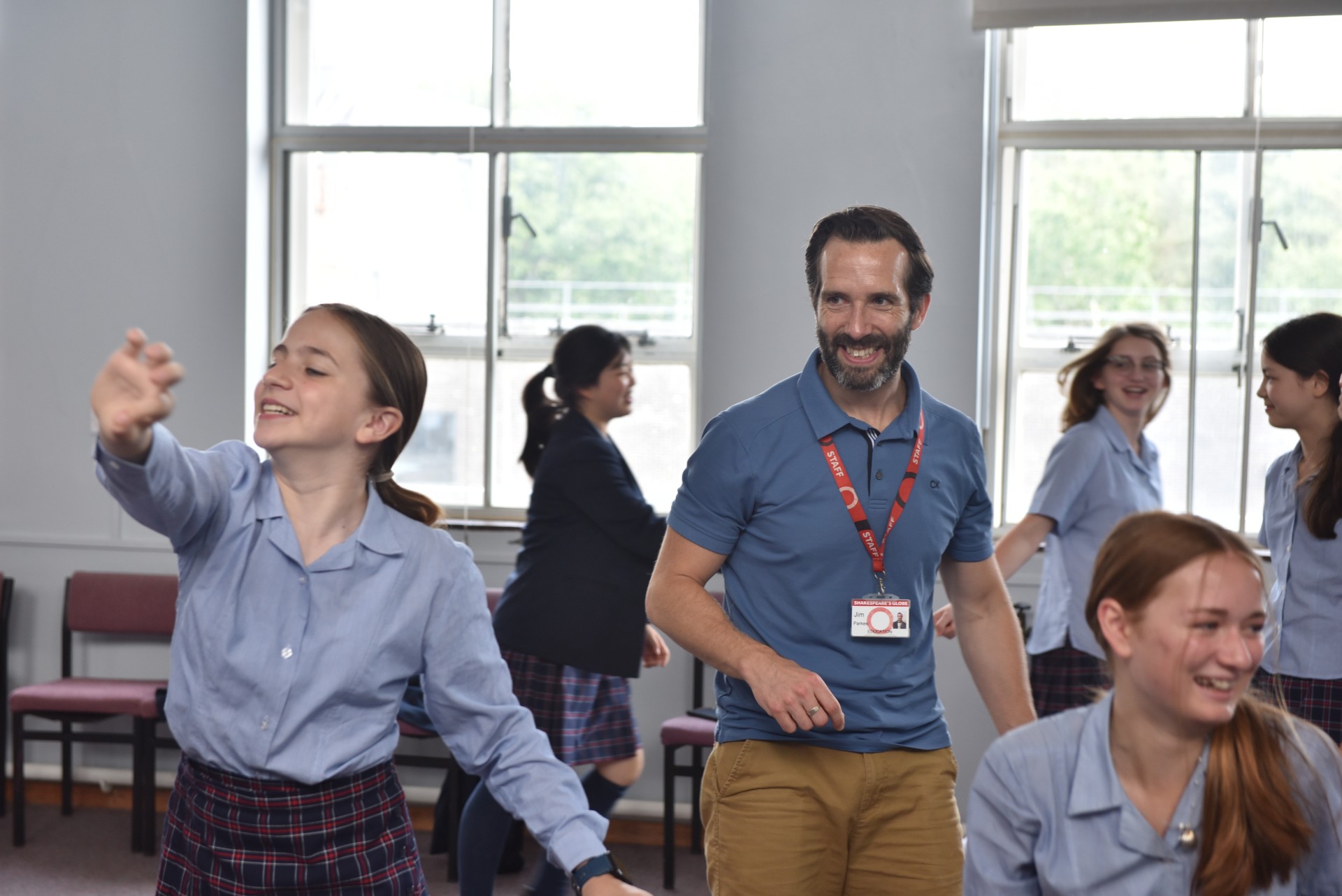Senior students in Upper 4 and Upper 5 were given the opportunity to gain remarkable insight into life in the trenches as a WW1 soldier. The entire Hub ground floor area was transformed into different military zones: a recruitment office, training area, support trench, front line trench, field hospital and an R&R area.
The girls began with conscription before receiving basic training in the form of PT, drill, and weapons handling. They then made their way to the support trench where they had the opportunity to see and handle some genuine WW1 artefacts; the items were kindly loaned to us by Ms Saunders’ uncle who has an exceptional collection of WW1 memorabilia. It allowed the girls to see how heavy the equipment was that the soldiers had to carry, and to imagine the impact of the weapons and artillery that was used.

Following this, the students moved to the front-line trench, which was created in the stage area. It was a full height trench with a firing step, sand bags, booming explosions and rats. They had to advance to No-Man’s Land, rescue casualties and avoid the effects of a gas attack. Once soldiers had survived ‘going over the top’, they had to make a hasty retreat to the field hospital. Each student was given a card with a particular war time injury on which allowed the doctors and nurses on duty to assess the damage.
Once all these stages were over, the young recruits made their way to the campfire for some well-earned R&R (in the form of a hot cup of tea and biscuits.) It was an informative and educational learning experience which the girls thoroughly enjoyed. One student stated, “We can now understand a little more about what they went through because we have experienced aspects of it ourselves”.
Mrs Holloway thanked the staff from the History and Design faculties, involved in organising this living history event for the pupils: ‘Such projects rely upon the commitment, expertise and vision of our staff. They have devoted time and resources to ensuring that our pupils understand the significance of Remembrance week, its historical context and its role in reinforcing the need for peaceful and collaborative working across communities.’
In the same week, a special remembrance assembly was held to mark Armistice Day where readings of First World War poetry proved to be just as moving and relevant over a 100 years on, especially for the classes in Upper 4 and Upper 5 who have been studying the poetry in English lessons. The striking cascade of vibrant poppies created by the school community last year, was also reinstalled from the roof of the Steam Hub, as a focus for remembrance at the school – a timeless display which further engaged the school community, and prompted thought about the lives lost in conflict.




